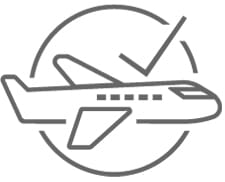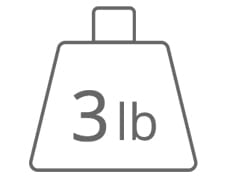Nebulizers
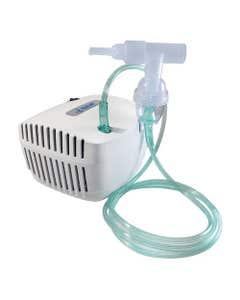 Blue Jay TAKE A BREATH Compressor Nebulizer$29.99
Blue Jay TAKE A BREATH Compressor Nebulizer$29.99- Small size and lightweight
- Ultra-quiet delivery
- Simple one-button operation
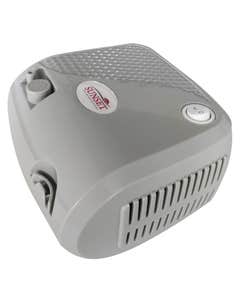 Sunset Compressor Nebulizer$29.99
Sunset Compressor Nebulizer$29.99- 60 decibels maximum sound output
- Produces .3ml to .4ml dosage per minute
- Lightweight and small packaging are suitable for travel
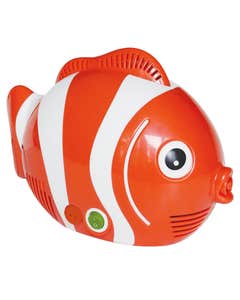 Sunset Pediatric Gordon the Fish Compressor Nebulizer$40.99
Sunset Pediatric Gordon the Fish Compressor Nebulizer$40.99- Child-friendly design to encourage therapy compliance
- Easy to replace filter
- Not Made With Natural Rubber Latex
- Powerful piston pump is efficient, dependable, and quiet
 Blue Jay Medical Mr. Blue Bear Pediatric Compressor Nebulizer$44.99
Blue Jay Medical Mr. Blue Bear Pediatric Compressor Nebulizer$44.99- Quiet Operation
- Lightweight And Easy To Carry
- Child-Friendly Design Reduces Anxiety
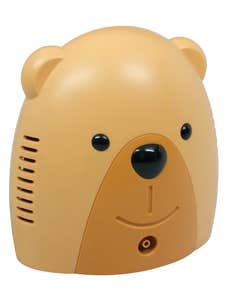 Sunset Sunny the Bear Pediatric Compressor NebulizerSpecial Price $35.00 Regular Price $49.99Temporary price reductionSave 30%
Sunset Sunny the Bear Pediatric Compressor NebulizerSpecial Price $35.00 Regular Price $49.99Temporary price reductionSave 30%- Average nebulization rate of 0.3-0.4 ml/min for fast treatment times
- Child-friendly design to reduce intimidation
- Lightweight and portable—only 2.75 lbs!
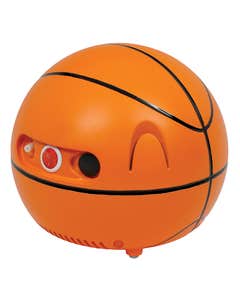 Sunset Pediatric Compressor Basketball NebulizerSpecial Price $35.00 Regular Price $49.99Temporary price reductionSave 30%
Sunset Pediatric Compressor Basketball NebulizerSpecial Price $35.00 Regular Price $49.99Temporary price reductionSave 30%- Fast treatment time—average mobilization rate > 0.15 ml/min
- Lightweight—weighs 3.3 bs!
- Child-friendly design to appeal to kids
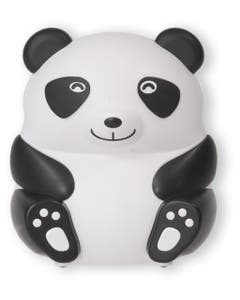 Panda Pediatric Compressor NebulizerSpecial Price $40.99 Regular Price $55.64Temporary price reductionSave 26%
Panda Pediatric Compressor NebulizerSpecial Price $40.99 Regular Price $55.64Temporary price reductionSave 26%- Piston-driven compressor with child-friendly design
- Compatible with 3 methods of aerosol delivery: angled mouthpiece, child mask, and infant pacifier
- 3-year limited warranty
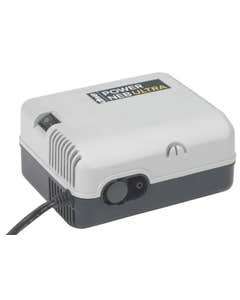 Drive Power Neb Ultra Compressor NebulizerStarting at$29.99 Regular Price $39.99
Drive Power Neb Ultra Compressor NebulizerStarting at$29.99 Regular Price $39.99- Only weighs 3lbs
- Comes complete with a disposable nebulizer kit
- Piston pump compressor helps deliver effective treatment
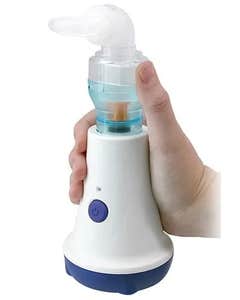 Sunset Handheld Nebulizer Compressor$89.95
Sunset Handheld Nebulizer Compressor$89.95- Small and compact—weighs only 0.25 lbs!
- Built-in filtration with a 0.25 ml/m nebulization rate
- 2-6ml medication capacity
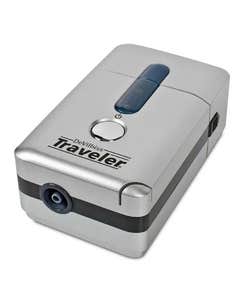 DeVilbiss Traveler Portable Compressor Nebulizer SystemSpecial Price $109.99 Regular Price $130.00Temporary price reductionSave 15%
DeVilbiss Traveler Portable Compressor Nebulizer SystemSpecial Price $109.99 Regular Price $130.00Temporary price reductionSave 15%- Lightweight
- AC or DC powered
- One touch operation
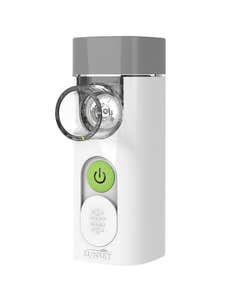 Sunset Portable Mesh Nebulizer with Rechargeable BatterySpecial Price $79.99 Regular Price $129.99Temporary price reductionSave 38%
Sunset Portable Mesh Nebulizer with Rechargeable BatterySpecial Price $79.99 Regular Price $129.99Temporary price reductionSave 38%- Best nebulizer for daily use
- Weighs only 0.25 lbs and fits in the palm of the hand
- Powerful and fast—maximum nebulization rate of 0.9ml per minute
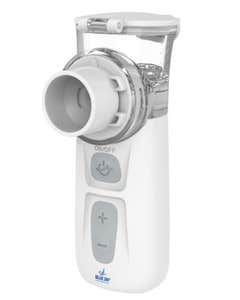 TAKE A BREATH Portable Handheld Mesh Nebulizer$89.99
TAKE A BREATH Portable Handheld Mesh Nebulizer$89.99- Tubeless and cordless design
- Vibrating mesh technology
- For use by children and adults.
- Small and lightweight
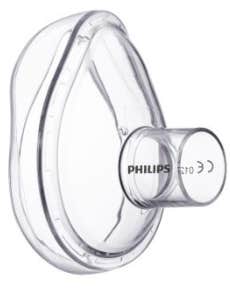 Philips Respironics InnoSpire Go LiteTouch MaskStarting at$11.00
Philips Respironics InnoSpire Go LiteTouch MaskStarting at$11.00For use with InnoSpire Go portable mesh nebulizer *sold separately*
Requires Philips Respironics Innospire Go mask adapter *sold separately*
Learn More about Philips Respironics InnoSpire Go LiteTouch Mask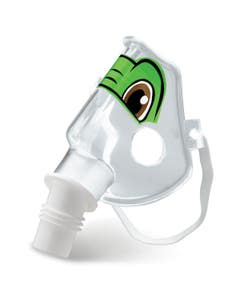 Philips Respironics Tucker The Turtle Reusable Pediatric Aerosol MaskSpecial Price $1.80 Regular Price $2.23Temporary price reductionSave 19%
Philips Respironics Tucker The Turtle Reusable Pediatric Aerosol MaskSpecial Price $1.80 Regular Price $2.23Temporary price reductionSave 19%- Reduces aerosol deposition in and around the eyes.
- Soft, flexible material provides better fit and patient comfort.
- Character faces appeal to children and support compliance.
- Tucker characterized by a permanent, waterproof sticker; built on time-tested SideStream technology.
- Sami characterized by whiskers and colorful eye stickers; partners exclusively with SideStream Plus nebulizer.
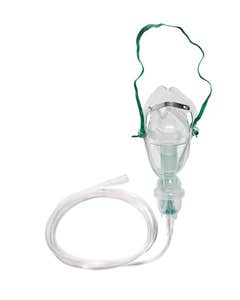 Adult Aerosol Mask with Nebulizer Kit$5.29
Adult Aerosol Mask with Nebulizer Kit$5.29- Nebulizer kit includes nebulizer mouthpiece and tubing
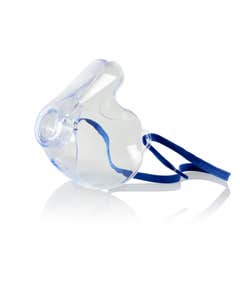 Philips Respironics SideStream Plus Adult Mask$5.75
Philips Respironics SideStream Plus Adult Mask$5.75- SideStream mask is used with SideStream PLUS high-efficiency nebulizers.
- For ages six and up.
- Easy to wash.
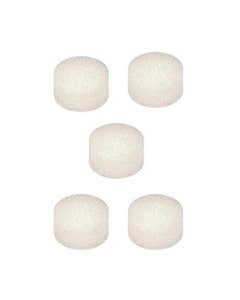 Filters for Drive Medical Nebulizers 5 pack$7.99Out of stock
Filters for Drive Medical Nebulizers 5 pack$7.99Out of stock- Genuine replacement filters are suitable for a variety of Drive Nebulizers (Drive model 18002, 18040, 18090, 18080, 4056)
- 5 per pack
 Disposable Nebulizer Kit$4.39
Disposable Nebulizer Kit$4.39- Disposable single patient use
- Nebulizer kit includes nebulizer mouthpiece and tubing
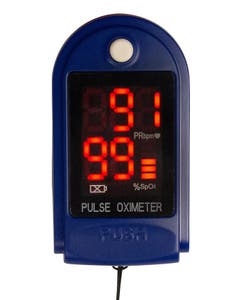 Roscoe Fingertip Pulse OximeterDiscontinued
Roscoe Fingertip Pulse OximeterDiscontinued- Auto Off Function
- Batteries Included
- Heart Rate Monitor Comes With a Lanyard
- Up to 30 Hours of Use on a Single Charge
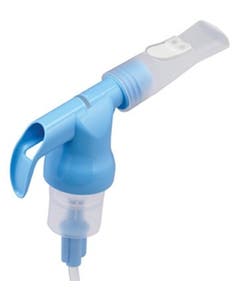 Philips Respironics Sidestream PLUS Reusable NebulizerDiscontinued
Philips Respironics Sidestream PLUS Reusable NebulizerDiscontinued- Used by both adults and children
- Material is latex-free
- Rapid treatment time
- Length is 6 feet (approx)
Learn More about Philips Respironics Sidestream PLUS Reusable Nebulizer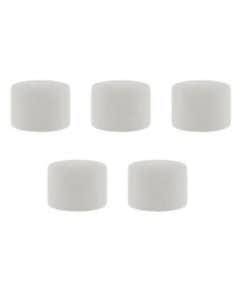 Philips Respironics Sami the Seal, Willis the Whale & Philips Home Nebulizer Replacement Filters (5 pack)$9.99
Philips Respironics Sami the Seal, Willis the Whale & Philips Home Nebulizer Replacement Filters (5 pack)$9.99Replacement Filters for Philips Respironics Sami the Seal Pediatric Nebulizer & Philips Home Nebulizer
Learn More about Philips Respironics Sami the Seal, Willis the Whale & Philips Home Nebulizer Replacement Filters (5 pack)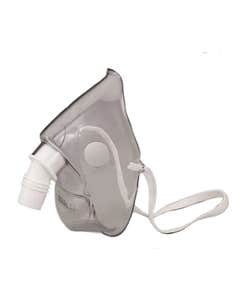 Sidestream Nebulizer with Pediatric Mask DisposableDiscontinued
Sidestream Nebulizer with Pediatric Mask DisposableDiscontinuedIdeal for use with Philips Respironics Sidestream nebulizers.
Learn More about Sidestream Nebulizer with Pediatric Mask Disposable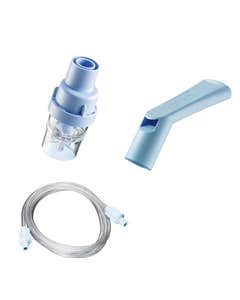 Philips Respironics Sidestream Reusable NebulizersDiscontinued
Philips Respironics Sidestream Reusable NebulizersDiscontinued- Fast and efficient delivery of treatment
- Can be used for up to six months
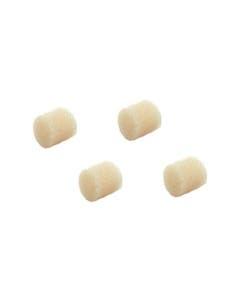 Philips Respironics Filters for InnoSpire Mini, MicroElite and MiniElite Nebulizer Compressor (4 per pack)$6.75Out of stock
Philips Respironics Filters for InnoSpire Mini, MicroElite and MiniElite Nebulizer Compressor (4 per pack)$6.75Out of stockFilters specifically for use with the Philips Respironics MicroElite & InnoSpire Mini (formerly MiniElite).
Learn More about Philips Respironics Filters for InnoSpire Mini, MicroElite and MiniElite Nebulizer Compressor (4 per pack)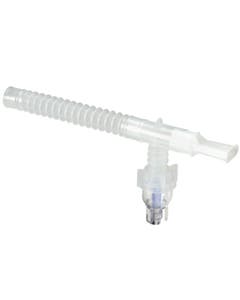 Drive DeVilbiss Vix One Disposable NebulizerSpecial Price $1.99 Regular Price $2.15Temporary price reductionSave 7%
Drive DeVilbiss Vix One Disposable NebulizerSpecial Price $1.99 Regular Price $2.15Temporary price reductionSave 7%- Medication to be added without opening the neb cup.
- Standard fittings accommodate most manufacturer's masks.
- Does not contain natural rubber latex.
- Compatible with most compressor nebulizer machines.
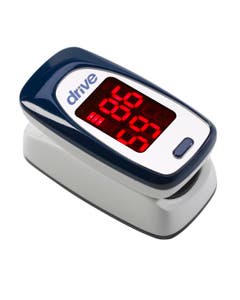 Drive Pulse OximeterDiscontinued
Drive Pulse OximeterDiscontinued- Easy-to-read LED display
- Displays SpO₂ and pulse rate
- Perfect for any patient
- Includes lanyard and two AAA batteries.
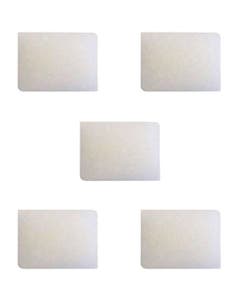 Air Inlet Filters for DeVilbiss Traveler Nebulizer System (pack of 5)$12.99
Air Inlet Filters for DeVilbiss Traveler Nebulizer System (pack of 5)$12.99This Replacement Filter is for the DeVilbiss Traveler Nebulizer. It measures approx. 3/4" W x 3/8 H. For best results, filters should be changed every 15-30 days, or when it appears dirty or discolored.
Learn More about Air Inlet Filters for DeVilbiss Traveler Nebulizer System (pack of 5)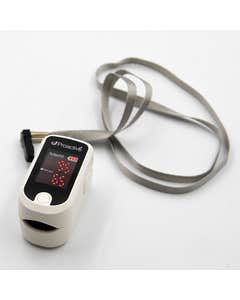 Proactive Pulse OximeterSpecial Price $24.58 Regular Price $69.95Temporary price reductionSave 65%Out of stock
Proactive Pulse OximeterSpecial Price $24.58 Regular Price $69.95Temporary price reductionSave 65%Out of stock- Lightweight
- Portable
- Easy to use
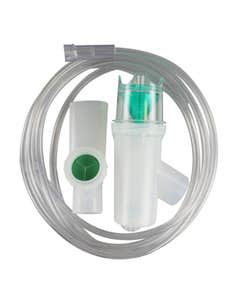 NebuTech HDN Reusable Nebulizer Cup with 7 Foot TubingSpecial Price $8.49 Regular Price $10.99Temporary price reductionSave 23%
NebuTech HDN Reusable Nebulizer Cup with 7 Foot TubingSpecial Price $8.49 Regular Price $10.99Temporary price reductionSave 23%- Nebulizes 3cc within 7 minutes or less at 7 LPM in horizontal or vertical position.
- Patented cone design with larger surface area coupled with a more efficient flow-through chamber.
- Incorporates one-way valves at the inlet and outlet paths.
- Price is for 1 Set.
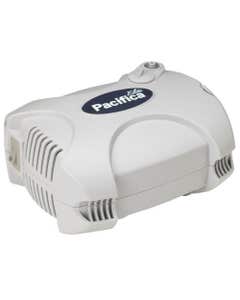 Drive Pacifica Elite NebulizerSpecial Price $42.00 Regular Price $55.00Temporary price reductionSave 24%
Drive Pacifica Elite NebulizerSpecial Price $42.00 Regular Price $55.00Temporary price reductionSave 24%- Ultra-Compact Design
- Piston Pump Compressor.
- Consistent Particle Size.
- 5-Year Warranty
- Expert Support
- In the box - T-adapter, A cup for medication, 7-feet tubing, Mouthpiece, Reservoir tube
Nebulizer Machines
Nebulizer machines convert liquid medication into a mist, which is then inhaled into the lungs through a mouthpiece or face mask. Nebulizers are often prescribed when inhalers are too difficult to use or ineffective for the patient’s treatment. Here is some basic information about the different styles of nebulizers
Types of Nebulizer Machines
Jet nebulizers: The most common of nebulizer machines, jet nebulizers use air compression to generate enough air to go through a short tube, into a nebulizer cup that holds the liquid medicine and converts the liquid into a mist for inhalation. Jet nebulizer machines are available at home, portable, and pediatric units just for kids. They are generally bigger and louder, and the medicine mist particles tend to vary in size. The machines are durable and typically less expensive to replace parts.
Ultrasonic-Vibrating Mesh nebulizers: These nebulizer machines use ultrasonic waves and are extremely quiet. The sound waves hit the liquid medicine and turn into a mist to be inhaled. These nebulizer machines are primarily portable units that are suitable for all age ranges. They are generally smaller and quieter with more consistent medical mist particle sizes. They provide faster treatment times as compared to jet nebulizers. These machines tend to be more expensive and while easy to clean and maintain, the parts may also be expensive to replace.
Portable Nebulizers: These nebulizers are ideal for patients who work, go to school, or are active and have to take their medication when not at home. Travelers love these nebulizers as they are significantly smaller than home nebulizers. Portable nebulizers can be either ultrasonic-mesh nebulizers or the more traditional jet nebulizer style. Portable nebulizers are battery-powered. Some units can have the option of a DC cord to be connected to a vehicle’s power source.
Just for Kids: These pediatric nebulizers have been designed with kids in mind. Some like the home machines have fun designs to help keep your child preoccupied while taking treatment. Others, such as the Philips Respironics InnoSpire Go, are small, whisper-quiet, and can be used with a mask so you do not have to constantly remind your child to only breathe in using his or her mouth. They are available for home use as well as portable. The portable nebulizers are ideal for kids who have school activities that can't be missed.
Home Nebulizers: These machines are the most commonly used type of nebulizer machines. While they have to be plugged into a wall outlet and are not portable, they have proven to be very reliable throughout the years. Another big advantage is the price as they are the least expensive type of nebulizer available.
Frequently Asked Questions About Nebulizer Machines
How To Use A Nebulizer Machine
Here are some basic instructions for using a Nebulizer:
- Place the nebulizer on a steady surface that can support the weight of the nebulizer
- Sanitize your hands before the start of the treatment
- Carefully measure and put the medication into the nebulizer cup
- Assemble the nebulizer cup and mask
- Connect the nebulizer tubing to the mask
- Connect the nebulizer and turn it on. You should see a light mist coming from the back of the tubing
- Take deep and slow breaths every 2-3 seconds before breathing it out.
- Continue the treatment until all the medication has disappeared. The nebulizer makes a sputtering noise when little medication is remaining.
Stop the treatment if you become dizzy or begin to feel shaky. Inform your healthcare provider or a doctor if the dizziness does not stop after nebulizer use.
Do I Need A Prescription To Buy A Nebulizer Machine?
Yes, you will need a prescription to buy a nebulizer. You can get a prescription from your doctor who is treating you for your respiratory disorder.
How Can I Determine Which Nebulizer System Offers The Most Effective Treatment?
Since nebulizers vary in features, reviewing them all and prioritizing your needs is the first step to choosing which will be most effective for you. Nebulizers range in medicine capacity, treatment time, size, and more.
How Often Should You Use A Nebulizer Machine?
You need to use a nebulizer upon your prescribed amount. In general, nebulizers can be used up to 3 to 4 times a day upon requirement.
How Long Does A Nebulizer Machine Last?
Each nebulizer treatment takes from 5 minutes to 15 minutes. You breathe through the mask or mouthpiece that is connected to the nebulizer. The medicine is slowly turned into a mist which you can inhale by taking slow and deep breaths.
Can I Fly With My Portable Nebulizer Machine?
If you are planning to board an airplane with your portable nebulizer ensure that they are FAA approved. This certification allows you to use the nebulizer during flight.
When traveling with a portable nebulizer, you need to ensure that you use a carry case to protect it from dirt and damage. Moreover, inform the Transportation Safety Administration (TSA) agents that you are carrying a nebulizer and prescribed medicine in your bag to avoid any delays.
At The Oxygen Concentrator Supplies Shop, we offer an array of nebulizers. If you are unsure about what product meets your needs or have any questions, contact us today so we can assist in reviewing your options.
How Do I Clean My Nebulizer Machine?
Review this blog article for an in-depth guide on how to effectively clean your nebulizer and its parts.
Does Insurance Cover Nebulizer Machines?
To keep costs at the lowest possible, The Oxygen Concentrator Supplies Shop does not accept any kind of insurance. However, after purchase, you can independently take your receipt to your insurance provider for potential reimbursement.






